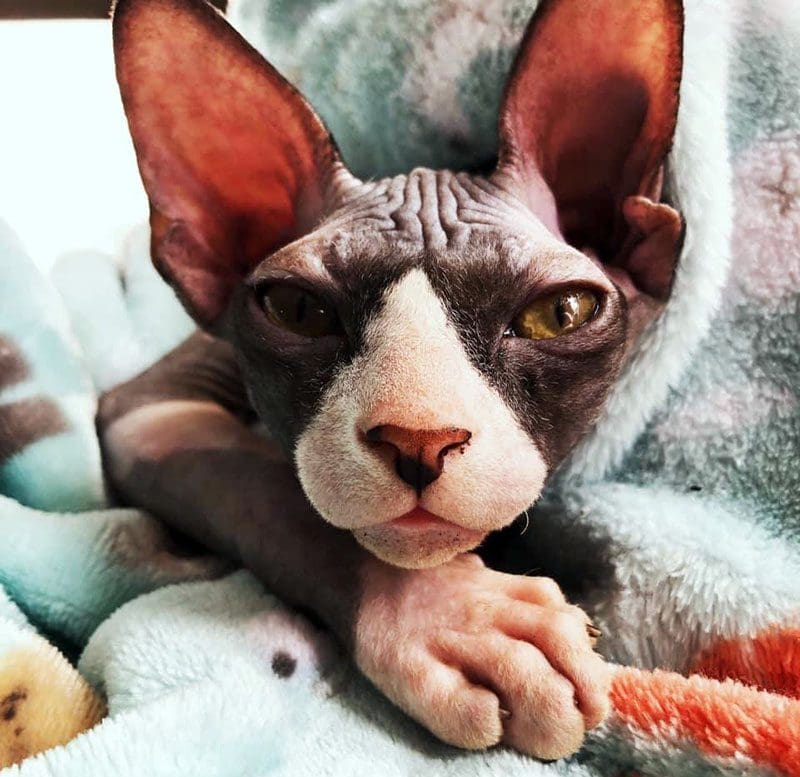
How Often Should I Take My Cat to the Groomer?
As a professional cat groomer, I am often asked this question. For my clients, the general rule I use for a healthy cat is:
You should take your cat to the groomer at least once every eight weeks.
In a perfect world, you would take your cat to the groomer once a month. This allows for the best grooming experience and provides the most benefit for your cat’s skin and coat. However, every eight weeks can keep most cats in maintained condition.
Cats who are old or sick should have a thorough bath every four to six weeks. The same is true if you have a Persian, Exotic shorthair, Himalayan, or other densely-coated breed or mixed breed.
Since these cats are prone to matting, more frequent grooming sessions can help them stay comfortable and look their best.
Cats with high-risk health issues should be seen every month. They may not be able to endure a full grooming session, so scheduling them monthly is a good approach.
Shorthair Cats are Often Easier
Many shorthair cats can get away with a bath, blow dry, and brush out once every three months. However, for the sake of routine and your cat’s comfort, I still recommend the cat is seen every eight weeks at a minimum.
The more often a cat is groomed, the less arduous each session becomes. This means less stress for both the cat and the groomer.
Additionally, health issues can sometimes be caught early if your cat is groomed every eight weeks.
It’s Good When Your Groomer Gets to Know Your Cat
I have detected abnormalities in cats after getting to know them during their regular grooming sessions.
After the cats were taken to the vet, conditions such as pneumonia, diabetes, cancer, arthritis, and parasites were discovered.
Cats will often hide their illness. However, it is difficult to hide things from a groomer. I am quite literally going over your cat with a fine toothed comb.
A groomer will sometimes discover life-threatening health concerns that were not obvious to the cat’s family.
Your Cat Benefits the Most from Routine Grooming
Contrary to popular belief, cats aren’t actually self cleaning. This goes for both longhair and shorthair cats.
Each time your cat licks his fur, he consumes shedding hair, household pollutants, and dirt that collects on his body.
A skilled groomer will remove dead coat and dirt which decreases shedding. This also has the potential to reduce health issues brought on when your cat consumes substances that stick to his coat.
Additionally, washing and blow drying your cat decreases the saliva and protein residue in his coat. This is helpful because saliva and protein residue is the actual cause of cat allergies for most people.
Hairless Cats Can Cause Allergies to be Worse

Allergy sufferers can actually have worse allergies from hairless cats.
The skin of a hairless cat doesn’t have the protection of a fur coat and this can lead to increased dryness and dander of the cat’s skin.
Since the dander causes allergies while the fur does not, the increased dander of a hairless cat can actually be worse for allergies.
Does Car Travel or Grooming Upset Your Cat?
Does your cat hate rides in the car or visits to the groomer?
Please check out our article on “How to Calm a Cat Down” for easy ways to help keep your cat’s grooming session as low-stress as possible.

As a professional cat groomer, I am often asked how to calm a cat down. Here are the best products and tips I’ve found over the years.
What If My Cat’s Coat is Matted?
A matted cat should just have a “lioncut” using quality electric clippers. Shaving underneath the mats with quality equipment is the safest and kindest way to get the cat back to a clean slate.
Shaving should not be considered a regular form of maintenance. After the mats are removed, a regular bathing routine should be established at least once every eight weeks.
Many clients of mine come to their first session apologizing for the state of their cat’s coat. The coat is often matted beyond the point that any bath or brushing could save it.
The truth is, brushing and combing can only get you so far in many cases. A cat’s coat can be very thick and contain as many as thirty hairs per follicle. The force needed to pull the dead hair from the coat with a brush would aggravate the cat and irritate his skin.
I like to use the example of two phone books with their pages interlaced. If you try to pull them apart, the friction from all the individual pages makes it almost impossible.
Similarly, greasy and staticky cat hair will also resist removal. A bath and drying actually changes the electrical charge of the hair. Combine that with a quality conditioning and this creates the perfect circumstances to blow the loose hair away.
This is much easier on the cat’s skin than a long and abrasive brushing session.
When Should I Brush My Cat?
As long as your cat’s fur is not matted, you can brush your cat in between grooming sessions.
This can gently remove some of the dead undercoat and many cats really enjoy some quality brushing time.
If you’d like to learn more, we have an article all about cat brushes, combs, and brushing tips!

We are often asked what the best cat brush is. In this article, we discuss our recommendations for the best cat brushes and brushing techniques for your particular cat.
Conclusion
For a healthy cat, a good rule of thumb is to take your cat to the groomer every eight weeks.
However, depending on the health, age, and breed of your cat, more frequent grooming sessions may be needed.
It’s good when your groomer gets to know your cat.
You can work together as a team to make sure your cat is comfortable, happy, and living his best cat life!
Ready for More Cat Articles?
Please check out our Cat Blog for a full listing of all of our cat articles!
Join Our Mailing List!
We hope you enjoyed reading this article! The Absolute Animal Care Blog features articles that contain our best recommendations for dog and cat wellness, training strategies, and products.
Please join our mailing list to receive updates when new articles are released!
